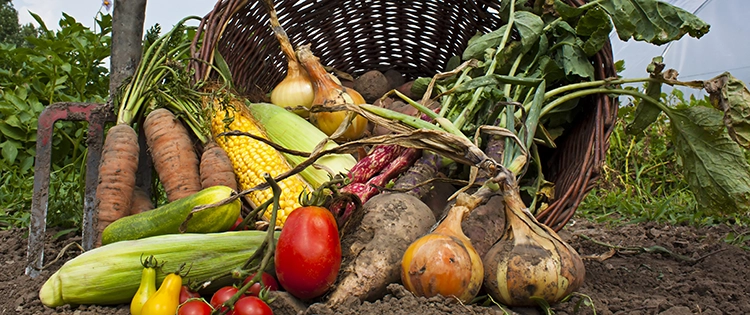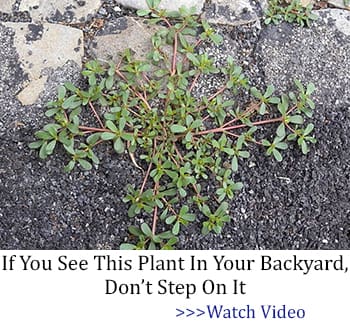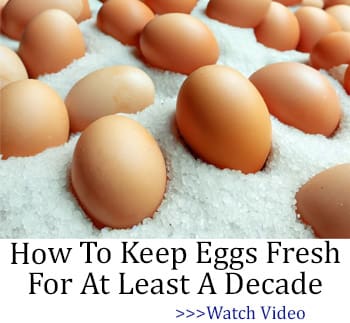Growing vegetables that can be harvested in less than a month is a smart way to maximize your garden’s productivity. You get to enjoy the rewards of your efforts sooner rather than later, making gardening both efficient and satisfying.
Whether you’re a seasoned gardener or just starting out, these fast-growing vegetables offer a quick and rewarding way to add fresh flavors to your meals and enhance your gardening experience.
Fast-Growing Vegetables Ready in Less Than 30 Days
Here are veggies that grow quickly, maturing in one month or less. If you’re planting late or filling gaps in your garden after harvesting, these vegetables are perfect to start with.
Radishes
Radishes grow really fast, ready to eat in just three weeks after planting. They’re perfect for filling small spaces and don’t need much attention. Plant the seeds about an inch apart in a sunny spot with temperatures ideally ranging from 55°F to 75°F (13°C to 24°C).
Pea Shoots
Pea shoots are the young and tender parts of pea plants, including leaves, stems, and curly tendrils. They have a sweet flavor and are ready to harvest in about 2-3 weeks. You can use pea shoots in salads, stir-fries, sandwiches, or as a tasty garnish.
They’re easy to grow and you can keep harvesting them by cutting the tops of the plants. Pea shoots like cooler weather, around 50°F to 70°F (10°C to 21°C), making them perfect for planting in early spring or late summer in most areas.
Arugula or Rocket
Rocket, also known as arugula, has a spicy flavor that’s great in pesto or salads. You can start picking it up in just 4-8 weeks. The best part is you can keep harvesting the leaves as they grow back, so you’ll have fresh rockets for a long time.
Just snip off the outer leaves, and the plant will keep producing more. Rocket grows best in temperatures between 55°F to 70°F (13°C to 21°C), making it perfect for planting in early spring or fall in most places.
Turnip Greens
Turnip greens are the leafy tops of turnips, which can be harvested while the roots are still small. Sow seeds directly into the garden about 1/2 inch deep and thin seedlings to 2-3 inches apart. The greens are ready to harvest in 20-30 days when they are tender and about 4-6 inches tall.
Turnip greens thrive in full sun but can tolerate partial shade. They require consistent watering to keep the soil evenly moist, promoting tender growth.
Baby Lettuce
Baby lettuce can be grown by sowing seeds directly into the garden or in containers. Scatter the seeds thinly and cover them lightly with soil. Ensure the soil stays consistently moist.
Baby lettuce typically matures in 25-30 days. It requires full sun to partial shade (at least 4-6 hours of sunlight per day) and regular watering to keep the soil moist but not waterlogged. The tender leaves can be harvested once they reach the desired size.
Spinach (Baby Leaves)
Spinach is best planted in cool weather. Sow the seeds directly into well-drained soil, about 1/2 inch deep and 2 inches apart. Thin the seedlings to about 3-4 inches apart once they are a few inches tall. Spinach baby leaves are ready to harvest in 20-30 days.
Spinach thrives in full sun but can tolerate partial shade. It requires regular watering to keep the soil consistently moist, as dry conditions can cause the plant to bolt (go to seed).
Microgreens
Microgreens are young vegetable greens that are harvested just after the first true leaves develop. To grow microgreens, sprinkle seeds evenly over a shallow container filled with soil, pressing them lightly into the soil and then covering them with a thin layer of more soil.
Keep the soil consistently moist and place the container in a sunny spot or under grow lights. Most microgreens can be harvested within 7-21 days, depending on the type. They require plenty of sunlight (at least 4-6 hours a day) and consistent moisture, but be careful not to overwater to prevent mold growth.
Cress
Cress is a fast-growing herb that can be grown indoors or outdoors. Sow the seeds densely in a shallow tray or directly in the garden, and press them lightly into the soil. Keep the soil moist and place the seeds in a sunny or partially shaded spot.
Cress is ready to harvest in 10-14 days when the plants are about 2-3 inches tall. It prefers moderate sunlight and moist soil conditions, making it relatively easy to grow with minimal care.
Mizuna
Mizuna is a Japanese mustard green that grows quickly and can be harvested as baby greens. Sow seeds directly into the garden or in containers, spacing them about 1 inch apart. Keep the soil moist and place in a sunny to partially shaded spot.
Mizuna is ready to harvest in 20-25 days for baby leaves. It prefers full sun but can tolerate some shade and requires regular watering to ensure the soil stays moist.
Additional Fast Growing Vegetables
Green Garlic
Green garlic is picked early for a mild taste. You can start harvesting it in 6-8 weeks. Use it in soups, stir-fries, salads, or as a seasoning. The whole plant is edible, from the bulb to the green shoots.
Green garlic is easy to grow and doesn’t need much space, so it’s great for gardens or pots. It grows in moderate temperatures, ideally between 50°F and 70°F (10°C to 21°C), making it suitable for spring and fall planting in most regions.
Broccoli
Broccoli grows best in cool weather and takes about 10-12 weeks to fully mature into big heads. If you want faster results, you can harvest broccoli sprouts or microgreens in just 1-3 weeks.
These young plants are packed with nutrients and are delicious in salads, sandwiches, or as toppings. Broccoli likes temperatures between 55°F to 75°F (13°C to 24°C), so it’s great for planting in early spring or late summer in most places.
Zucchini and Squash
These easy-to-grow vegetables taste best when they’re young and tender. You can start picking them about 5 weeks after planting. Harvesting them early gives you the freshest taste and encourages more growth.
This makes them perfect for new gardeners or anyone who wants fresh veggies quickly. These vegetables do well in temperatures between 50°F to 75°F (10°C to 24°C), so they grow nicely during spring and fall in most places.
Green Onions
You don’t need to wait long for green onions as you can start cutting the green stalks just 3-4 weeks after planting. They add great flavor to your dishes and are packed with nutrients. These fresh greens are perfect for salads, soups, or stir-fries right from the start.
They grow best in temperatures between 55°F to 75°F (13°C to 24°C). Ideally, you should be planting them in early spring or late summer.
Baby Beetroot
Beetroot is awesome because you can eat both the greens and the roots. The greens are perfect for salads, and the beets can be pickled, roasted, or grated. You can harvest baby beets in about seven weeks, and start picking the greens in just four weeks.
They grow best in cooler temperatures, between 50°F to 75°F (10°C to 24°C), which makes them great for planting in early spring or late summer in most places.
Beans
Dwarf or bush beans grow quickly and are ready to pick in just 5-8 weeks. You can roast them, add them to stir-fries or salads, or eat them fresh as a crunchy snack from the garden. They’re great for small gardens or pots on your porch.
Bush beans like warm weather, around 70°F to 85°F (21°C to 29°C), so plant them in late spring or early summer when it’s nice and sunny.
Tips for Growing Fast-Growing Plants
To help your veggies thrive, make sure they get enough sunlight, water, and nutrients. When they have the right amounts of these three things, plants are more likely to survive and grow well.
- Soil Preparation: Plants need nutrients from the soil to grow well. Good soil has organic matter, air, water, nitrogen, phosphorus, and potassium. Since soil needs vary, it’s smart to test your soil occasionally to determine which fertilizers are best.
- Companion Plants: There are plenty of companion plants for each vegetable I mentioned above, but the best ones that worked for most of them are these specific 10 herbs.
- Watering: Water is crucial for plants as it transports nutrients from roots to the rest of the plant, similar to how blood carries nutrients in our bodies. But, too much or too little watering can harm plants.
- Sunlight: Plants need light to make their food through a process called photosynthesis. Not enough light, whether natural or from lamps, can slow down their growth by limiting this process.
- Fertilization: Fertilizers provide essential nutrients that the soil may lack. You can choose between organic or chemical fertilizers. Organic options like manure, compost, and bone meal come from plants or animals, while chemical fertilizers are made in factories. Both types work fine.
Growing these nine quick-harvest vegetables is a great way to enjoy fresh food fast. Just remember to prepare good soil with compost, give them plenty of sunlight, and keep the soil moist but not soggy. Whether you’re just starting out or have been gardening for years, these veggies are simple to grow and give you delicious results fast.
Veggies You Only Plant Once And Harvest Forever
The Only Food That Grows Almost Faster Than You Can Eat It (Video)
25 Crops You Can Grow In Buckets All Year Round













